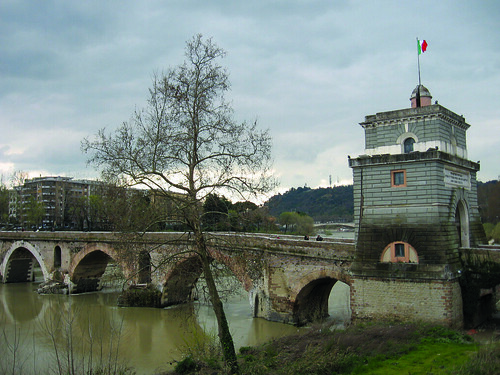Columnist Matt Flocco summarizes the history of christian denominations.

Imagine being part of a religious cult that worships its god secretly in the dead of night. Imagine fearing for your life because the society in which you lived in said you were worshipping a false god. Imagine what it was like to be a Christian between A.D. 30 and A.D. 313.
Hard to imagine, isn’t it, considering Christianity is now the world’s largest religion, with more than two billion followers, according to the Ontario Consultants on Religious Tolerance. But in ancient Rome, the small group of Jews that considered themselves Christians was not accepted. Christ was viewed, if anything, as just another god to be worshipped by a minor religious group and nothing to be compared to the mighty Jupiter, Neptune and Minerva.
It was not until A.D. 313, after the Battle of Milvian Bridge, that this changed. Whether it was a hallucination or divine intervention, Emperor Constantine saw in the sky – according to some he saw this in a dream – the image of a Chi-Ro, with the words “in this sign you shall conquer” written in Greek above it. Constantine then became the first emperor to accept Christianity, and passed the Edict of Milan, a document of religious tolerance in Rome.
Slowly but surely, the empire switched from mythological pagan worship to monotheistic worship of Christ. This monumental transition is seen in all forms of art and architecture across Rome. As mentioned in my previous column on Valentine’s Day, to make the transition smoother, the popes adopted pagan holidays and made them Christian. The Capitoline Museums is a perfect synthesis of this idea.
The Capitoline Museums is filled with mythological figures to display the power of the papacy. But at the center of the piazza is a bronze statue of Marcus Aurelius. The only reason popes kept this statue was because they thought it was Constantine.
In the centuries following Constantine’s reign, the Empire was divided between the generations of his sons. All were considered Christian or Roman Catholic until A.D. 1045, when the Great Schism happened, and the East Empire split from the West, refusing to recognize the Pope. And so, a second major branch of Christianity was formed: Greek Orthodox.
Even in today’s world, Greece, Russia and Eastern Europe are primarily Orthodox. The Latin countries of France, Spain, Portugal, Italy and their conquests (South America and the southern half of Africa) are all Roman Catholic.
One of the major differences between Orthodoxy and Catholicism is the amount of philosophy or abstractness involved. According to https://religionfacts.com, Orthodoxy is much more about a personal experience of truth, rather than a concrete group idea of it. In Catholicism, the ideas of sin, salvation and grace are each a bit more concrete, and there is a bit more regulation as to the ways to achieve them.
It is interesting to note that the ancient mentalities of antiquity were similar. The Greeks were philosophers and the Romans were engineers. Of course, people that lived in these times were both thinkers and doers, but this general comparison between the two helps keep it all a bit more easy to understand.
“But wait!” you say. “What about the rest of us Christians?” This second major split from the Catholic Church happened in the 16th century during the Protestant Reformation. Henry VIII decided to split away from the rest of the church and do his own thing. I would too if the Pope said I couldn’t have that many wives.
And so, the Reformation happens, and England and Scotland split from the Catholic Church. This is why the slight majority of Americans are Protestant, or some form of it: Baptist, Methodist, Lutheran, Presbyterian. According to the Protestant Heritage in Encyclopedia Britannica, this branch of the church focuses on “justification by grace alone through faith, the priesthood of all believers, and the supremacy of Holy Scriptures in matters of faith and order.”
Obviously, the majority of Rome is Catholic. When you walk around the city, you know that almost every church you hit is going to be Catholic. There are, however, some exceptions, like All Saint’s Church, an English-speaking Anglican community. Another, St. Andrew’s, is also English-speaking but is a Presbyterian church of Scotland.
Researching for this particular article has caused be to examine my own religion. One of my good friends from Drexel, who attended a nondenominational church with me, once ask, “If you were not raised Christian, do you think you eventually would have believed in Jesus?”
I found this question perplexing and slightly troublesome, and to this day, I still do not know. I treated this article more like a history lesson to educate you on the background of what many, but not all, of us call our faith. No matter what your religion, I encourage you to research the background of it and to understand what you practice, even if you do not agree with all of it. In order to understand other religions, we must first understand our own.
Matthew Flocco can be reached at matthew.flocco@temple.edu.



Eastern Orthodoxy (Greek Orthodox is only one branch of a large worldwide communion of over 300 million)is not a “branch” of Catholicism that was created during the Great Schism ( which is dated to 1054, NOT 1045). The Great Schism was the result of cultural,political, and theological differences which had been simmering for a long time. The Christian Church as a whole was never called “Roman Catholic”-in fact, that designation was not used until the 18th Century and was originally a term of derision used by Anglicans.
The Eastern Orthodox Church is just as old as the Roman Catholic Church but it developed differently. We accept the Pope as “First Among Equals” but not as “Supreme Pontiff”. It is not a matter of a “refusal” to accept the Pope’s authority-the very idea of an infallible bishop with universal authority over all other churches is foreign to our thinking.